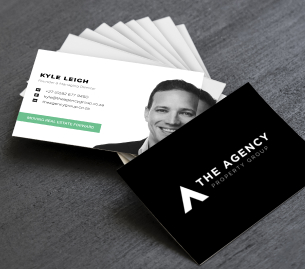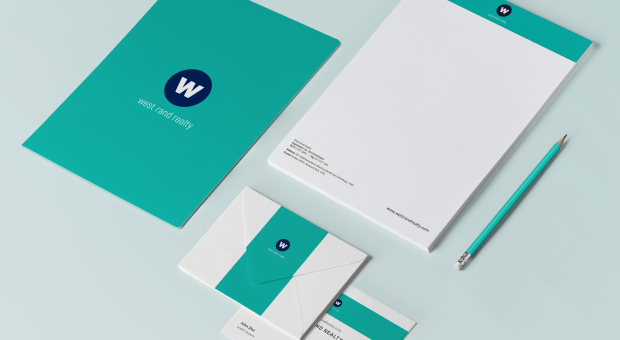Reading time: Approx. 8 min
As defined in A Strong Foundation , your brand identity is a collection of the visual (and even audio) elements that your users come into contact with. It’s made up of your logo, boards, business cards, stationery, office signage, advertising etc.
Once you’ve defined your brand and had a logo designed, you can start working on your brand identity. Sometimes this is done at the same time as a logo as the two work together in application.


Opinion is split on the usefulness of business cards in the digital age. It’s so easy for a user to get your contact details through LinkedIn or your website. Nevertheless, we still like the idea of handing out a physical reminder of meeting someone. It’s also, in many cases, the first opportunity to show off your brand identity. Unlike your boards, users will have time to consider your business cards. We still recommend keeping this clean and simple though. A logo on one side and basic contact details on the other is perfect. Don’t start listing services!

Letterheads, envelopes, compliment slips etc are also used less and less these days. At a minimum you should have a letterhead designed though. If you have the budget, get these professionally printed as most office printers will insert a margin around your document, which will limit what your designer is able to accomplish. The colours are also inconsistent through office printers. Always ensure you receive a digital version that works in Microsoft Word or an equivalent word processor to use when generating digital documents.
Your shopfront offers users a glimpse into the type of service users can expect before they’ve even met an agent. There are 100’s of shops you’ve never entered just because of the the feeling you had passing it. Make sure you have “curb appeal” by keeping windows clean and paint fresh. A couple of well-maintained planters, an a-frame board with a benefit statement or any number of ways to make your entrance stand out won’t go unnoticed. When it comes to signage, you want your brand to be easily noticed, without being garish. A few well placed logos within the style of your brand identity will do the trick. If you’re showcasing properties in your windows, ensure they are well designed with large photos and easy to ready details.
PRO MOVE - Executing your brand across so many areas can be a time consuming and costly exercise, but you don’t have to do everything at once. Work with an experienced design studio, set a budget and schedule the rollout so that you have the end goal in sight. Eventually you’ll have a uniform brand identity that excites your team and attracts users.
Your brand identity is all the ways users come into contact with your brand, so it’s also worth considering having the following designed to ensure consistency:
Consistency across your brand identity is the most important and challenging aspect to get right. A user might pass a property board, go to your website, get emailed an appointment confirmation and arrive at your office in a single day. If the experience of your brand is not consistent at every point, you will look unprofessional and lazy.
There are more ways than ever before for users to be exposed to your brand. Let’s look at a few ideas to help keep things in check.
Brand Guide
This is just a digital or physical document that describes your brand identity and can include:
The more you have designed the bigger this document will be and it should evolve over time. Even if you’re a new agency, this can be a good investment as mistakes can be costly to fix down the line.
Templates
Templates are a great way to ensure consistency. Get templates made for any repeatable brand identity or marketing material. Examples could be:
Start with the essential identity elements listed above and ensure there is consistency in their implementation. Remember the personas from your brand strategy? You’re designing an experience for your users, so keep your personal preferences in the background.
Next week we start looking at an element of your brand identity that demands it’s own chapter: your website.
Next up: Your Website as a Marketing ToolCopyright © 2025 Prop Data (Pty) Ltd Privacy Policy